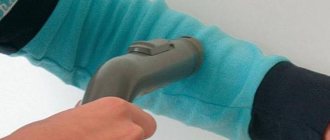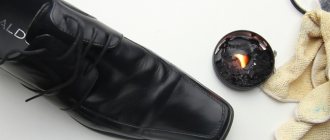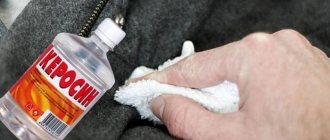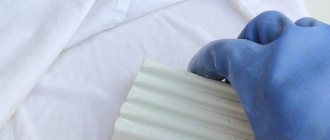Share
Tweet
+1
Pin
Usually we just don't want to fix the situation when once clean pillowcases turn into rags with drops of grease and stains. Many people simply throw them away or throw away half a rag, thinking that the problem cannot be solved. But there are many tips that you can use to help you wash your pillowcases. Many people wonder about washing greasy and greasy pillowcases. It is not possible to wash with ordinary powder to a good result in all cases. In addition to poor bed linen care, there are many other factors that contribute to deterioration. With frequent contact with dirty hair, the pillowcases deteriorate and have to be replaced with new ones.
How does hand washing wash?
What does the “Hand Wash” program mean? Installed in an automatic washing machine, it helps to wash things delicately and accurately due to the low water temperature (30-40°). If you are interested in how to wash in a washing machine without spinning, opt for the manual mode.
Interesting materials:
How can I repair a crack in laminate flooring? How can you paint over a white spot on dark blue jeans? How can I cover the wall? How can you close the corners of the arch? What can replace casein? What can you sow for the New Year? How to clean large windows? How to wash cast iron cookware? How to wash linoleum to avoid streaks? How to clean windows outside?
Stains on a pillowcase and how to remove them
- Tea and coffee will help remove the mixture of ammonia, glycerin and water.
- A fresh red wine stain can be easily washed off under running hot water; white wine and champagne can be washed off with a solution of a teaspoon of baking soda and liquid soap in a glass of water.
- Fruit juice will remove hydrogen peroxide with water in a ratio of 1:12.
- Foundation, mascara, eyeliner will require the use of acetone or gasoline, lipstick - pharmaceutical borax.
- Chocolate stains can be easily removed if you wash your clothes in a solution - take a teaspoon of salt per 1 liter of water.
Regardless of the origin of the stain, it is recommended to remove it immediately, without waiting for it to dry.
Whitening Precautions
Bleaching bed linen at home requires following recommendations and precautions that will help avoid negative consequences for the skin and respiratory tract, as well as fabric damage.
- Follow all recommendations strictly! Many housewives increase the recommended soaking time or add too much bleach. This reduces the performance characteristics of the fabric.
- Traces of rust should not be removed with chemical bleaches: the contamination can spread over the entire surface of the laundry.
- It is preferable to soak laundry in plastic containers. If you are using an aluminum product, there should be no chips on it, as they may react with bleaching agents.
- Bleach and products containing chlorine should be used only when necessary, and not with every wash. These substances have an aggressive effect on the tissue. Frequent use of these products leads to rapid wear of bed linen.
Simple measures will help you avoid the need to bleach things: soaking before washing in plain water or adding a couple of drops of lemon, frequently changing bed linen, storing linen in a dry place.
Whitening bed linen in the washing machine
Bleaching items by machine washing is no longer difficult, since modern automatic washing machines are equipped with an additional compartment for bleach.
Follow our instructions exactly to avoid any complications with whitening:
- Throw the laundry into the drum of the washing machine, first dividing it by fabric category. Underwear is washed separately with other items, and the same goes for bedding. The exception is cotton items; they can be bleached together. Be careful to only put white items.
- Pour the required powder and bleach into the compartments of the tray. Don’t confuse the compartments: powder has a “II” symbol, and bleach has a triangle.
- Select a mode based on fabric type. All items have labels indicating the permissible washing temperature. Don’t forget to pay attention to them before washing your snow-white linen, so as not to worsen the condition of the product.
- Start the machine and wait for the result.
It happens that the washing machine does not have the necessary compartment for bleach. Then proceed to the bleaching stage after the main wash.
Laundry detergent and bleach work well at certain temperatures. Powder can be washed at 40°C, and bleach at 60-90°C. If the bleach is of good quality, then it effectively performs its task even in warm water. To check this, you can do a test wash by pouring powder into one compartment and dry bleach into the other.
Tips for caring for white sets
Housewives say there is a lot of hassle with white bed linen. After just a couple of washes, you have to look for a solution on how to return the sheets to their shining whiteness. This can be done if you adhere to the following rules.
- Wash it properly. Sort your laundry: Colored and white sheets should be placed in the machine separately. Follow the rule, even if you know that colored fabric does not fade: such proximity “eats” the shining whiteness of the sheets. And wash the bed right away: dirty sheets, after lying in the basket, will turn yellow.
- Rinse well. To prevent laundry from turning yellow, it must be rinsed carefully. It is advisable to do this first in warm and then in cold water.
- Soften the water. If you actively “exploit” white bed linen, then you have to wash it often. Regular contact with hard water causes the fabric to turn yellow. Your job is to soften the water. Use powders containing softeners, add soda or vinegar solution to the machine.
- Store wisely. Before storing white bedding in the closet, make sure it is completely dry. Moisture turns laundry gray and smells bad. If you like white bedding, you shouldn't equip cabinets to store it in the bathroom. It's too humid here: chances are that when you put a white sheet on the shelf, you'll get a gray one. Do not allow bedding to sit: regularly remove it from the closet for airing. To prevent a musty “aroma,” wash your laundry with pieces of soap.
Bleaching bed linen at home will not be useful if you get into the habit of soaking white sheets before putting them in the washing machine. You can add peroxide or a couple of drops of lemon to the bowl. If the duvet cover is heavily soiled, add dish detergent to the soaking water.
The dream of a good housewife is to make her home as comfortable as possible. An integral attribute of home comfort is snow-white bed linen. Over time, the fabric loses its whiteness, and the task of returning a pure, cool shade of white seems impossible. This article contains useful information about methods that will help whiten bed linen at home. Not only household chemicals, but also folk recipes will help the housewife with this.
Drying rules
Knitted items need to be dried correctly. The appearance they will have after washing depends on this.
While they are wet, they are not twisted or squeezed. It is not recommended to lift items soaked in water so that the openwork parts do not stretch under their own weight.
The larger the knitting and the wider the loops, the higher the risk of deformation of the fabric. You need to remove things from the bathtub after the water stops flowing from them in streams.
Dry clothes on a flat surface. A cloth is placed under it that absorbs water well. Most often a terry towel is used. It needs to be changed when it gets wet.
Rules to follow:
- Having laid out the item on the dryer, you need to straighten out all the folds;
- do not hang the product on a rope;
- do not expose the yarn to direct sunlight;
- Do not dry the product near heat sources or on heating appliances.
If the fabric has stretched after washing, it is gently compressed in the desired direction. A shrunken product, on the contrary, is slightly stretched. The tighter the loops fit together, the longer the wool will take to dry.
Choosing a product in the store
Store-bought products will help you bleach very dirty laundry at home quickly and efficiently. This method requires minimal time and effort. Household chemicals departments sell various bleaching products: you can choose both budget and expensive options. Bleach is divided into three types:
- optical;
- chlorine based;
- oxygen
To make a choice, you need to know the features of each type. All products have their pros and cons, but finding an effective and best bleach is a feasible task. The table below will help you decide.
Table - Pros and cons of different types of bleaches
| Bleach type | pros | Minuses |
| Optic | — Creates a visual effect “whiter than white”; - can be added when washing in an automatic washing machine; - found in powders | - Whitening does not actually occur - only a visual effect; - does not cope with stains and dirt |
| Chlorine based | — Available bleaching agent; — effectively whitens; — removes dirt; — disinfects | — Thins the fabric, causing the bedding to deteriorate; — you can’t put it in the washing machine (hand wash only); — evaporation of caustic compounds provokes irritation of the respiratory tract; - upon contact with skin causes itching, flaking, allergic reactions |
| Oxygen | — Safe (no chlorine); — whitens effectively and delicately; - can be applied to any type of fabric; - suitable for washing machine | - High price |
When choosing laundry bleach at home, it is better to give preference to modern household chemicals. Oxygen bleach for clothes is safe, environmentally friendly and copes with the main task “with a plus”. As a bonus, it saves time, because most modern products are designed for machine whitening.
Chlorine-containing bleaches are popular “the old fashioned way”: for a long time housewives had no alternative, and when a choice arose, many continued to buy the products they were accustomed to. The cost of chlorine-containing bleaches is also attractive, but they make the fabric thinner, so in reality it only creates the appearance of savings.
Cleaning colored items
To remove noticeable stains left by sweat from dyed fabric, it is necessary to exclude substances with bleaching characteristics: acid - oxalic, citric, soda, peroxide.
Table vinegar, ammonia, salt, and laundry soap have a safe effect on colored items. You can choose other effective techniques from your arsenal of home techniques:
- Grind 2 aspirin tablets into powder and stir in 100 ml of slightly warmed water. Impregnate heavily contaminated areas. The treated item should be washed after 3 hours. If the marks remain, repeat the steps, taking less water - 3 tbsp. l.
- Pour 200 ml of water into an enamel mug. Dissolve the salt and add ammonia - 1 tsp. Sweat prints are moistened generously. After 30 minutes, clean them with a brush. This method is recommended for cotton and linen clothing.
- To remove noticeable traces of sweat from wool or viscose, pour ammonia into a glass container - 1 tsp. and add twice the volume of white spirit. Using a sponge, moisten the contaminated area with the resulting mixture. Start washing after 1.5 hours.
- If you need to clean thick textiles with persistent dye, soap a damp sponge generously with laundry soap. Wipe off traces and rinse. Then crystalline oxalic acid is poured into a thin, uniform layer, washing it off after a quarter of an hour.
Vodka works effectively. Moisten a cloth and place it on the stain for two hours.
Very sweaty feet cause discomfort. Because of this phenomenon, as bacteria develop, shoes quickly become saturated with an unpleasant odor.
To remove traces of sweat and unpleasant odor, various methods are used. You can pour flour, soda or starch inside the shoes. These substances absorb aromas and restore freshness. It is more convenient to place the soda in a linen bag in the evening and put it in your shoes until the morning.
An effective method is to wipe the internal surfaces with ammonia. It is also recommended to soak a cotton pad with hydrogen peroxide and generously coat all surfaces, and then dry thoroughly.
Starch for removing stains
A light pink solution of potassium permanganate removes sweat from shoes and removes unpleasant odor. Vinegar (9%) will help cope with the problem. Cotton swabs soaked in this product are placed inside the shoes and kept for 12 hours. And then they listen on the balcony.
You can put several tablets of activated carbon in each piece of shoes in the evening. It is advisable to place pieces of thin blotting paper under them so that black marks do not remain.
To remove sweat marks from shoes, pour dry leaf tea. Cooled, strong brew of green tea helps, soak a soft rag and wipe all the insides of the boots.
At night, add dry cloves to your shoes or use dry crushed mint leaves. It is recommended to wipe the insides with a slice of lemon to remove old odor, and then sprinkle dry oak bark powder. Sneakers, slippers, sneakers, sandals, sandals can be washed in warm soapy water.
There are many methods to combat sweat stains. This allows you to choose the appropriate option, focusing on the type of product, its color, and type of fiber.
Alcohol works well against ingrained yellow sweat stains on black clothes. You can use medical or denatured alcohol, or a strong alcoholic drink. Contaminated areas should be wetted with an alcohol solution and left for half an hour. Then rinse thoroughly and wash.
For colored and dark clothes, you need to prepare a strong saline solution. To do this, dissolve three tablespoons of table salt in a glass of warm water and treat the contaminated areas with the solution. Leave until completely dry and rinse.
Don’t rush to throw away your favorite item if it shows sweat marks in the armpits. Don't delay washing and immediately use one of the methods listed above. Be careful when working with flammable liquids and follow safety precautions.
Reasons for the loss of whiteness
White bed linen becomes gray or even yellow after just a few washes. This happens because some powders contain elements that, when interacting with water salts, color the fabric. But the main enemy of fabric is hard water.
Color may also be affected by storage in a damp environment. Also, you should not leave your laundry wet for a long time, otherwise mold and an unpleasant odor may appear.
It is not recommended to wash light-colored laundry with colored items, as yellow (and other) stains may appear on the white fabric. It is not for nothing that there is a recommendation to separate laundry by color categories before washing.
Good old ways: boiling and soaking in white
For a long time it was believed that the best way to return dazzling cleanliness to bed linen was boiling. This method is suitable for cotton and linen sheets and duvet covers. It is still used as an alternative to harsh chemical bleaches. Boiling will help if you need to wash bed linen from yellowness. The downside of this method is that you have to spend time.
You can do without boiling. The second method known to all housewives is soaking in white. Bleach contains chlorine, so be prepared to wash it yourself. You cannot add such products to the machine.
Let's boil
- large capacity (necessarily enameled/galvanized);
- white towel or cloth;
- laundry powder/soap;
- ammonia.
- Line the bottom of the selected container with a white cloth.
- Make a soap solution. If there are “blots” on the sheet, wash them with laundry soap.
- Send the laundry to the boiler. Try to straighten it out as much as possible.
- Pour enough soap solution to cover the laundry.
- Add a tablespoon of ammonia. You can skip this step if there is no dirt on the sheet.
- Boil for about an hour. Be sure to use a wooden stick for stirring.
Soaking
- Prepare a soap solution using powder or laundry soap.
- Add white: for every 3 liters - a tablespoon of the product.
- Soak the bedding for 20 minutes.
- Rinse thoroughly by hand.
Why do things smell like dampness, rubber, chemicals?
Preventive measures are not complicated. It all starts with installing the cabinet. It should not be placed too close to the wall. There should be a small gap between it and the piece of furniture. It is necessary to ensure free passage of air.
You can remove the smell of sweat using a special SmellOff sweat odor neutralizer. This product is completely natural and does not cause an allergic reaction on the skin even in children. Recommended:
Clean things from visible dirt. If this product cannot be washed, dirt can be removed with damp cloths. If the item can be washed, but the smell of sweat has ingrained itself too deeply and does not disappear after washing, then you should still wash these clothes before processing. Apply the product by spraying to all products that give off a sweat odor.
Particular attention should be paid to areas where sweat is absorbed most often - the armpits, back; the product should be poured onto them for deeper absorption. After processing, leave the product in a dry and closed space for 12-24 hours until completely dry, and then ventilate.
There are several reasons why your washed clothes may have an unpleasant odor. They must be installed, otherwise it will not be possible to cope with the problem. Factors that contribute to the appearance of a musty odor include:
- Stagnation of water in the drum or rubber cuff. To prevent this from happening, do not close the door tightly immediately after washing.
- Storing dirty clothes in the washing machine. In conditions of high humidity, bacteria and mold fungi begin to actively multiply. Regular washing will not help to cope with the smell they cause.
- Improper care of the washing machine. The source of unpleasant odors can be such elements as: drain hose, detergent tray, water filter.
- Incorrect connection of the hose to the sewer pipe. In this case, the laundry will emit a characteristic sewage smell after the first wash. Another reason for this “aroma” is the rotting of the old valve, subject to many years of use.
- Failure to comply with the dosage of detergents. A large amount of powder does not have time to rinse out, covering all the elements of the washing machine with a film. This mucus becomes a reservoir for storing and multiplying bacteria.
- Long-term storage of dirty items in a laundry basket. Microbes and fungi thrive in such conditions, quickly increasing their numbers and causing a rotten smell.
- Leaving things in water for a long time. If you leave laundry soaked in a basin for 2-3 days, it will begin to rot, emitting a sour smell. Also, things can turn sour in the machine if there is a sudden power outage.
The smell of rubber can come from things after washing them in a new machine. Therefore, all manufacturers recommend running the first cycle without laundry.
A chemical smell is a consequence of using large amounts of laundry detergent or other detergents. Wearing such things is dangerous to health, especially for small children and pregnant women.
When an unpleasant trail lingers from things after each wash and comes from all the laundry, the reason is hidden in the washing machine.
If this problem occurs once, most likely it is associated with long-term storage of dirty clothes in a basket or drum.
This happens when things are hung overlapping, at a small distance from each other, which prevents normal air circulation. Drying in a room with poor ventilation and low humidity levels makes the problem worse.
We suggest you read: How to remove powder from clothes
You can cope with the problem using fabric conditioner. It is best to use flavored formulations, for example:
- Vernel Freshness of a summer morning or Vernel Aromatherapy of serenity, their cost is about 200 rubles per 1 liter;
- Porinse Aroma conditioner with violet scent for 300 rubles;
- concentrated fabric conditioner Lenor Alpine meadows, its cost is 160 rubles.
Regular white removes odor well, but it must be used carefully so as not to damage the fabric fibers. You can also soak things in the solution for half an hour. laundry soap
laundry soap
, then wash them as usual.











